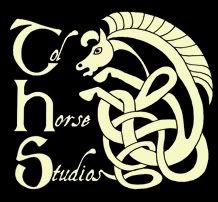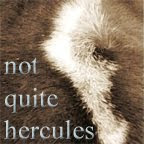Da dao de shu niu
Hinge of the Way
Within the trend of my work there is an inevitable return to the equine-human connection, something that drives me daily. The bond I have with my own horse is something far deeper than the typical bond shared between pet and owner. When riding, and especially when practicing dressage—an equestrian art akin to ballet—the separation between myself and my horse falls away. It is as much an art, a striving for something pure and beautiful, as it is a way of life, an act of trance and meditation.
While considering what to title this series, I wanted to find a way to express not only the removal of context inherent in the abstraction of the images, but I also wanted to convey the experience of the bond I share with my horse—the physical companionship as well as the act of trance in motion. Not able to express these ideas with a single word, as it seemed beyond the constraints of English, and perhaps even Western culture, I began to look at words with no direct translation into English, fascinated by the incompatibility of language versus meaning. I first found "hózh'q," a word in Navajo which means, "the beauty of life, as seen and created by an individual." I was drawn to it, but felt I needed to continue searching. Slowly I found my way into Chinese and Japanese phrases, which lead to my reflections on Chuang Tzu—writings close to my own spiritual center. Flipping through my rather old, dusty copy (it is a book I never leave behind when moving), I found what I sought immediately: "A state in which 'this' and 'that' no longer find their opposites is called the hinge of the Way. When the hinge is fitted into the socket, it can respond endlessly" (Chuang Tzu, 35).
The meaning behind "hinge of the Way," is far more embedded in this project and my own equine connection than it at first appears. My images, processed to bring out deep, rich blacks to assist in the removal of their initial context, depict and abstract features of the equine form. When we view and perceive parts of the body, we cannot separate it from our notions of the whole. However unconsciously the process, the perception of an arm is bound by its opposites—the perception of there also being a leg, a body. By abstracting them, by defamiliarizing them—a meditational process in its own right—I strive to remove the automation of the mind's pairing and identifying, allowing it to create new narratives. The withers, or any featured aspect of the equine form—"this" or "that"—no longer find their opposites. When preforming dressage, or experiencing the depth of the connection between myself and my horse, I no longer find my opposite, no longer find any separation between myself, or any other form. Just as I do when riding, I hope that the viewers of this series enter the same mental state, the same juxtaposition of "this" and "that," and find the hinge of the Way.
June 2009
Friday, July 24, 2009
大道的枢
2009-07-24T08:57:00-05:00
Emma
Hinge of the Way|statement|
Subscribe to:
Post Comments (Atom)











